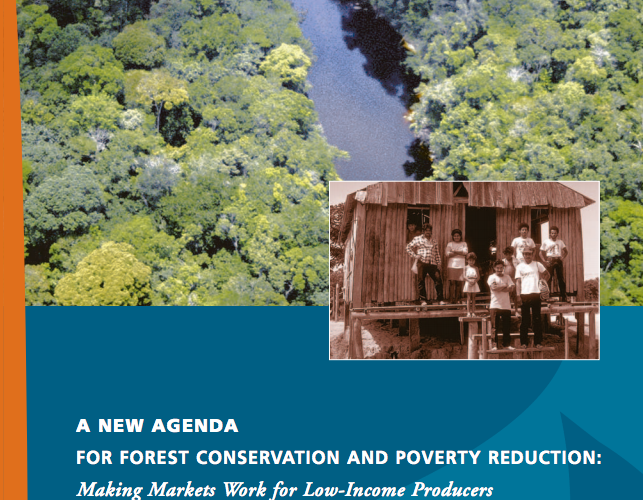
Autores: Scherr, Sara J. / White, Andy / Kaimowitz, David
Año de publicación: 2004
País:
Idiomas: Inglés
Editorial: Forest Trends, CIFOR, IUCN
The future of the world’s forests and the future of millions of the world’s poorest people are inextricably linked. Rural poverty is concentrated in many areas where the world’s biodiversity is most threatened. More than a billion people now live within the world’s 19 forest biodiversity “hotspots” and population growth in the world’s tropical wilderness areas is 3.1 percent, over twice the world’s average rate of growth. Over 90 percent of those who live on less than a dollar a day depend fully or in part on forest products for their livelihoods. The dominant models of forest management and protection are increasingly inappropriate in the face of this reality. Large-scale logging in commercial forest concessions, industrial forest plantations and public protected areas all deprive poor communities of lands and forests they traditionally controlled and contribute little, if anything, to rural livelihoods Even social forestry initiatives that do seek to restore these rights typically seek to sharply restrict commercial use by local people. A fundamental re-assessment of the role of forests in rural development, and the role of local people in forest conservation, is urgently needed.
Indeed, changes in forest resources, markets, and governance offer new opportunities for low-income producers. At least a quarter of the forests in developing countries are now officially owned or administered by indigenous and other communities. Millions of smallholder farmers, especially those in forest-scarce but agriculturally less favored
regions, are growing trees not only to recover local ecosystem services, but also to meet rapidly growing domestic demand for forest products. In some areas, forest and farm tree resources are the principal assets of the poor and the most proximate opportunity for poverty alleviation.
Unfortunately, however, low-income producers presently benefit only marginally from commercial forestry activities. Forest markets pose formidable barriers to profitable participation by the rural poor. Current market trends, if unabated, will continue to deny these poor people opportunities to fully use their forest resources for their own development.
Market policies that discriminate against community producers keep prices low and limit income opportunities. Policies being promoted by some environmental groups and industry lobbies would mean that in the near future most industrial wood could come from industrial plantations and an increasingly consolidated forest industry, effectively cutting off forest and farm communities from critical income opportunities. Local producers often do not have access to sufficient capital, market contacts and information, or technology to exploit new market opportunities. They lack support to compete effectively in either export or domestic markets. Unless a major global effort is made to secure and develop community forest opportunities over the next decade, rural communities will not be able to capitalize on their forest assets—and will thus have little incentive to keep them.
This paper by Sara J. Scherr, Andy White and David Kaimowitz lays out a set of strategies to promote forest conservation in ways that positively contribute to local livelihoods and community development in low- and middle-income countries.1 The authors fully recognize the critical importance of the “safety net” functions of forests for the poor. But they also identify specific market niches where large numbers of low-income producers have, or could develop, a competitive market advantage. They identify important commercial opportunities for private forest industry, forest enterprises and business service providers to partner with low-income forest producers. They also explore alternative strategies to recognize, encourage and reward forest conservation by local forest owners and users. Real world cases described in the paper illustrate their potential and feasibility, as well as the difficulties to be overcome. Critical to achieving these benefits will be removing present policy barriers to local market participation, in particular securing forest use and ownership rights, reducing excessive regulatory burdens, “leveling the playing field” for local producers in forest markets, and involving local producers in forest policy negotiations. The authors identify key roles in the strategy for local people’s organizations and federations, for private forest industries and investors, for rural development and conservation institutions, and for policymakers.
Readers from all these diverse perspectives will find it of value. We believe that with strategic action over the next generation, local producers can play a much larger role in the forest sector, benefiting much more from forest markets and contributing much more to forest conservation.
MICHAEL JENKINS, President; DAVID KAIMOWITZ, Director-General
Forest Trends Center for International Forestry Research
Autores: Scherr, Sara J. / White, Andy / Kaimowitz, David